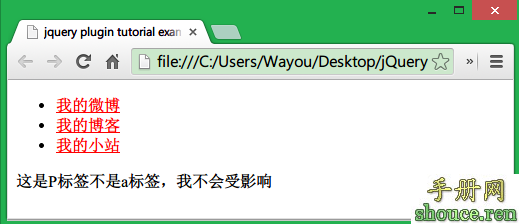最详细IE下条件注释判断浏览器版本
jerry wordpress 2016年03月12日
收藏
<!--[if !IE]><!--> 除IE外都可识别 <!--<![endif]--> <!--[if IE]> 所有的IE可识别 <![endif]--> <!--[if IE 6]> 仅IE6可识别 <![endif]--> <!--[if lt IE 6]> IE6以及IE6以下版本可识别 <![endif]--> <!--[if gte IE 6]> IE6以及IE6以上版本可识别 <![endif]--> <!--[if IE 7]> 仅IE7可识别 <![endif]--> <!--[if lt IE 7]> IE7以及IE7以下版本可识别 <![endif]--> <!--[if gte IE 7]> IE7以及IE7以上版本可识别 <![endif]--> <!--[if IE 8]> 仅IE8可识别 <![endif]--> <!--[if IE 9]> 仅IE9可识别 <![endif]-->
| 项目 | 范例 | 说明 |
|---|---|---|
| ! | [if !IE] | The NOT operator. This is placed immediately in front of the feature, operator, or subexpression to reverse the Boolean meaning of the expression. NOT运算符。这是摆立即在前面的功能,操作员,或子表达式扭转布尔表达式的意义。 |
| lt | [if lt IE 5.5] | The less-than operator. Returns true if the first argument is less than the second argument. 小于运算符。如果第一个参数小于第二个参数,则返回true。 |
| lte | [if lte IE 6] | The less-than or equal operator. Returns true if the first argument is less than or equal to the second argument. 小于或等于运算。如果第一个参数是小于或等于第二个参数,则返回true。 |
| gt | [if gt IE 5] | The greater-than operator. Returns true if the first argument is greater than the second argument. 大于运算符。如果第一个参数大于第二个参数,则返回true。 |
| gte | [if gte IE 7] | The greater-than or equal operator. Returns true if the first argument is greater than or equal to the second argument. 大于或等于运算。如果第一个参数是大于或等于第二个参数,则返回true。 |
| ( ) | [if !(IE 7)] | Subexpression operators. Used in conjunction with boolean operators to create more complex expressions. 子表达式运营商。在与布尔运算符用于创建更复杂的表达式。 |
| & | [if (gt IE 5)&(lt IE 7)] | The AND operator. Returns true if all subexpressions evaluate to true AND运算符。如果所有的子表达式计算结果为true,返回true |
| | | [if (IE 6)|(IE 7)] | The OR operator. Returns true if any of the subexpressions evaluates to true. OR运算符。返回true,如果子表达式计算结果为true。 |
<!--[if lt IE 9]> 加载CSS1 <!--[else]> 加载CSS2 <![endif]-->
这样有效是有效,但是用HTML VALIDATOR里,报错,因为这个不符合XHTML 1.1的规范,
如果把ELSE语句去掉,则正确.
方法1:
加载CSS2 <!--[if lt IE 9]> 加载CSS1(可以把要重写的写在这里). <![endif]-->













